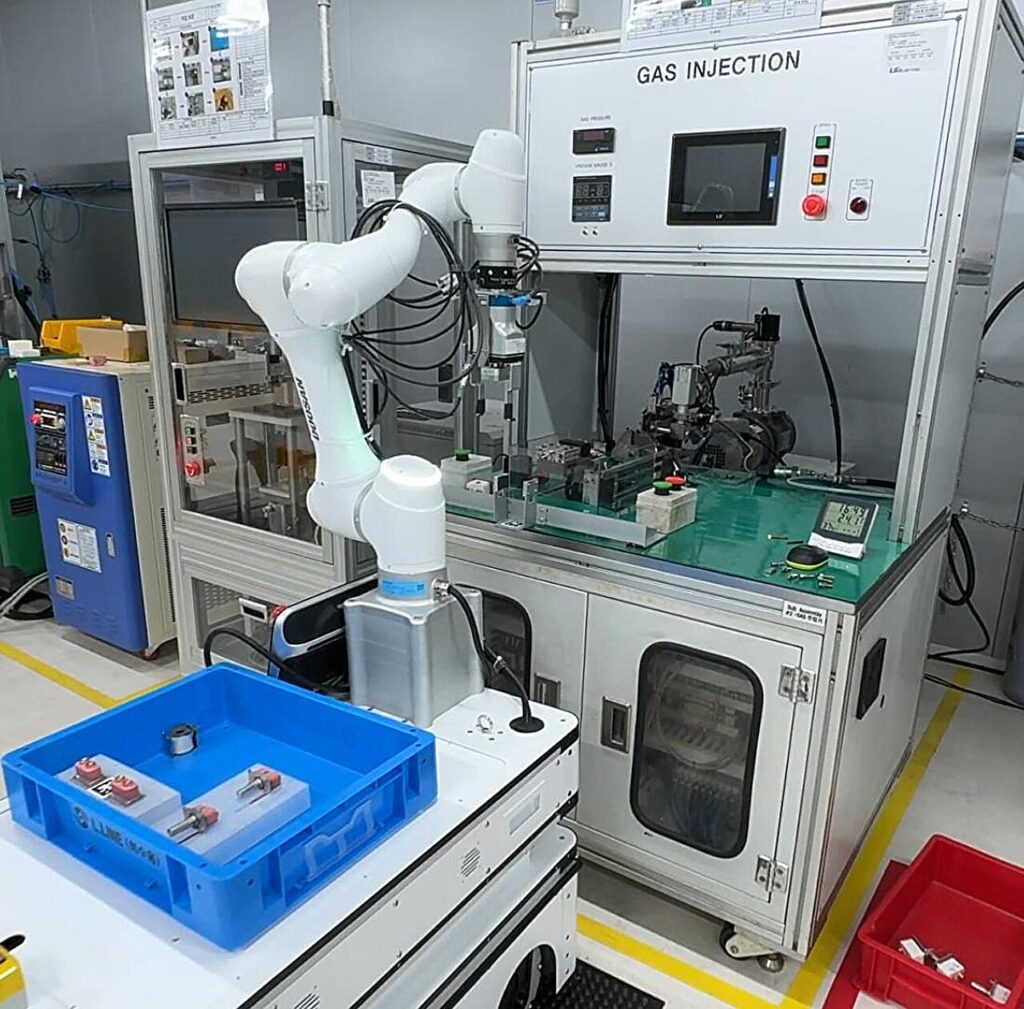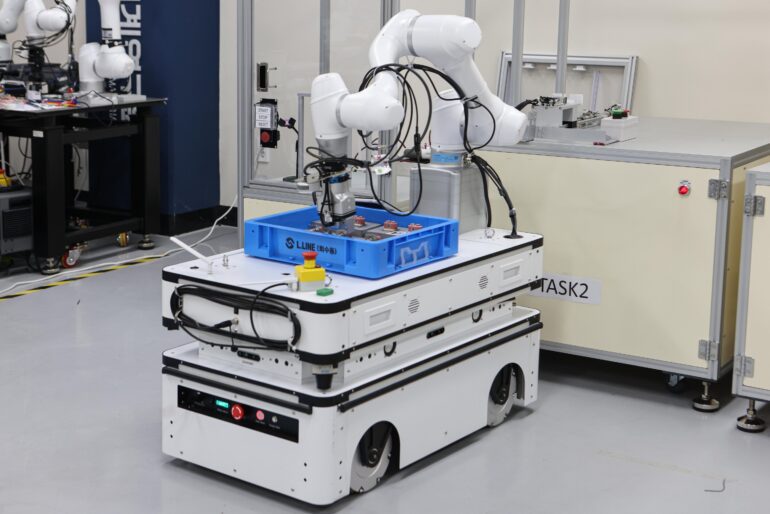TL;DR:
- A groundbreaking AI technology designed for robot work has been developed, allowing seamless integration of robots into manufacturing processes.
- The technology is the result of extensive research led by Chang-hyun Kim, Head of the Department of AI Machinery at the Korea Institute of Machinery and Materials (KIMM).
- It is currently being implemented in the manufacturing processes of electronic component producers, with plans for expansion across various manufacturing sectors.
- The AI technology leverages the “Large Language Model (LLM)” and a virtual environment to understand user commands and autonomously generate and execute task directives.
- It streamlines work processes, facilitates task specification, and minimizes the need for on-site modifications.
- This development addresses the limitations of traditional robotics in manufacturing and offers potential for diverse applications.
Main AI News:
A groundbreaking AI (artificial intelligence) technology tailored for robot work has emerged, marking a pioneering achievement on the global stage. Developed for the first time in the world, this cutting-edge technology promises seamless integration of robots into manufacturing processes, encompassing automotive and machinery production, assembly, and beyond. The dawn of this new era is poised to elevate the working conditions across manufacturing facilities.
The visionary research endeavor, spearheaded by Chang-hyun Kim, Director of the Department of AI Machinery at the Korea Institute of Machinery and Materials (KIMM), has triumphantly birthed an AI technology meticulously crafted for manufacturing applications.
The initial deployment of this transformative technology finds its footing in the realm of electronic component manufacturing. The research team harbors ambitions of steadily broadening the horizons of its applicability across diverse manufacturing sectors.
At the heart of this groundbreaking AI technology lies the fusion of the “Large Language Model (LLM)” and a virtual environment. This innovation empowers robots to interpret user commands, autonomously generate task directives, and execute them seamlessly. Voice or text inputs effortlessly trigger the generation of task sequences and movements, while a pre-learned virtual space aids in pinpointing the optimal work configurations. Simultaneously, it plays a pivotal role in streamlining work processes and autonomously detecting objects to avert potential collisions.
Traditionally, the utilization of robots in manufacturing necessitated site modifications to accommodate the robot’s operational constraints rather than adapting the technology to the existing work environment or specific tasks at hand. This inherent limitation curtailed the scope of tasks robots could undertake. Furthermore, the integration of diverse technologies related to movement and object recognition remained fragmented.
Recent strides in AI, notably the integration of LLM, have breathed new life into robotics for multifarious tasks. Yet, practical application beyond the confines of laboratory environments proved elusive.
Enter the newly minted technology, which offers a game-changing capability to precisely specify robot tasks. Armed with pre-learned insights from virtual spaces, robots can flawlessly execute their assignments with minimal on-site adjustments. Ongoing on-site demonstrations attest to the technology’s potential to efficiently handle a gamut of real-world scenarios anticipated in manufacturing facilities.
Chang-hyun Kim, at the helm of the Department of AI Machinery at KIMM, remarked, “We have achieved a global milestone by developing specialized intelligence for robotic tasks, seamlessly amalgamating AI and robotics, and applying them to tangible manufacturing environments.” He further emphasized, “This technology is presently undergoing rigorous testing in the production processes of electric vehicle (EV) component manufacturers, with plans for its gradual expansion.”

On-site application test of the manufacturing process using robots: Images of research achievements. Source: Korea Institute of Machinery and Materials (KIMM)
Conclusion:
The emergence of this pioneering AI technology for robot work signifies a transformative shift in the manufacturing industry. It promises increased efficiency, adaptability, and a broader scope of tasks that robots can undertake. Manufacturers should closely monitor its implementation, as it has the potential to revolutionize their operations and enhance competitiveness in the market.

